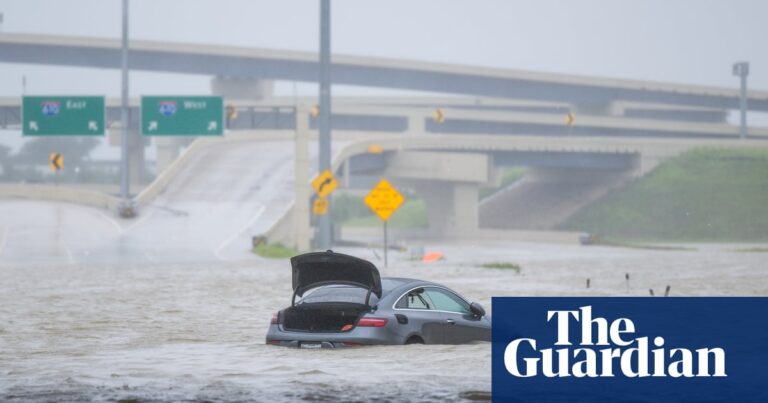Hurricane Beryl, which made landfall in Texas on Monday after wreaking havoc in the Caribbean, has been strengthened by “highly abnormal” ocean temperatures and could produce even more violent storms in the coming months, scientists have warned.
Beryl raged through the Caribbean as a Category 5 hurricane, packing winds of 165 mph (265 kph), killing 11 people, before making landfall near Houston as a Category 1 storm, leaving more than 2 million people without power.
No Category 5 hurricane has ever formed in the Atlantic this time of year — most major storms form closer to September — but Beryl quickly intensified from a minor storm to a Category 4 hurricane in just two days.
Scientists say the deadly intensification was also due to unusually warm ocean temperatures along Beryl’s path, with waters warmed by the climate crisis giving the storm extra energy over the past 10 days.
“Beryl is a surprising phenomenon by itself, but for it to form in June is completely unprecedented,” said Brian McNoldy, a climate scientist at the University of Miami. “It’s just amazing that ocean temperatures are getting that warm.”
“I don’t think anyone expected something this extreme to happen, but it’s exceeded all expectations. With oceans being affected by climate change, these kinds of extreme storms are becoming more likely.”
Ocean temperatures around the world have been rising steadily as the planet warms from burning fossil fuels, but last year was “exceptionally” high, McNoldy said. A marine heatwave swept across 90 percent of the planet’s oceans last year, making it the hottest year on record for the oceans. That heat surge has barely stopped, with sea surface temperatures recording a drop every day for 12 straight months through March.
The part of the tropical Atlantic stretching from Central America to Africa is known as the prime hurricane generating region, and the area has been “surprisingly warm” in recent weeks, McNoldy said. Parts of the North Atlantic have been up to 5 degrees (9 Celsius) above normal over the past month.
Ocean temperatures in the region usually peak in September or October, but this year’s unusually hot weather has caused this to happen unusually early. “We’ve been experiencing warmer than normal peak temperatures in the Caribbean since mid-May, which is really unusual,” McNoldy said. “If the oceans are already at the peak of hurricane season, then we’re going to see peak hurricanes.”
Meanwhile, water temperatures across much of the Gulf of Mexico are “basically as warm as bathtub water,” said Alex DaSilva, AccuWeather’s chief hurricane expert. “These warm waters are at the surface and extend down hundreds of feet. Warm water acts like jet fuel for hurricanes, so it probably won’t take long for temperatures to bounce back after Beryl.”
Ocean temperatures remaining warm have made this a potentially devastating hurricane season, with the National Oceanic and Atmospheric Administration predicting 13 hurricanes through November, up from the usual seven to eight. The onset of a cyclical La Niña weather pattern could fuel these storms even more. “Beryl is a worrying omen for the rest of the season,” McNoldy said. “It won’t be the last of these storms.”
While climate change isn’t necessarily causing an increase in the overall number of hurricanes, scientists have found evidence that storms are now more intense, intensifying faster, and moving slower. Hurricanes derive their power from warmer oceans, but they also bring more intense rainfall because a warming planet holds extra moisture in the atmosphere.
Warming oceans pose new threats in terms of destructive hurricanes — some scientists have called for a new “Category 6” classification for storms with winds of 192 mph or more — and threaten the vast web of life, including humankind, that depends on the oceans that cover 70 percent of the planet.
The oceans are absorbing huge amounts of human-made emissions and heat, which, while protecting people on land from more severe warming, can also distort fish populations, dissolve coral reefs and shellfish, rob the ocean of oxygen, and upend the foundations of ocean currents.
Scientists warn that such dramatic changes to the oceans will leave a staggering legacy that extends beyond the lifetime of any individual human. “The time scales of the oceans are not as fast as those of the atmosphere,” Celeste Sauro, director general of the World Meteorological Organization, said earlier this year. “We can safely say that once changes take hold, they are largely irreversible on time scales of 100 to 1,000 years.”

